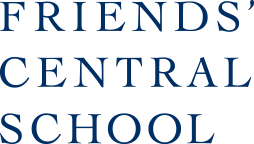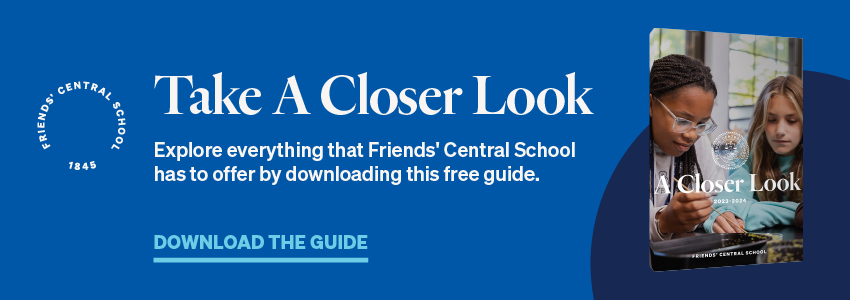
One of the greatest strengths of our country lies in the diversity of those who call it home. Each individual, each family, each neighborhood and community contributes to the story of America, and has since the founding of the nation.
And yet, the fact cannot be overlooked that throughout our nation’s history there have been and continue to be inequities based on race, culture, gender, abilities, income, and sexual orientation. To ignore these very real challenges is to deprive ourselves of the opportunity to do better for future generations.
Free Downloadable Guide: Take a Closer Look at Friends' Central School
That is why at Friends’ Central, we strive not only to provide an educational experience which is equitable to all of our students, but also to instill in them a drive to promote equity in their actions each and every day. Community, equality, and stewardship form central pillars which inform and guide our educational philosophy and mission.
Below, we define what exactly equity means in the classroom, why it is so important, and we explore some of the ways that we aim to promote equity within our community.
What does “equity in the classroom” mean?
The term equity can have a number of different definitions depending on the specific context in which it is used. That being said, the definition offered by Dr. Akuomo Nwadike of Inclusivity Education strikes at the heart of what equity means:
“[Equity is] fair treatment, opportunity, and access to all things for all people to overcome unjust systemic barriers that have disproportionately affected those from historically marginalized groups.”
With this in mind, it’s important to note that the terms “equity” and “equality” are often used interchangeably. While both are important, they do refer to different concepts. Equality is about giving everyone the same thing. Equity is about giving each individual what they need to be successful.
In practice, equality in the classroom might translate into every student receiving access to the literature that will be read. Equity, on the other hand, takes into account the unique needs of each individual student. In an equitable classroom model, some students will receive enlarged copies of the same texts for their needs. Some students may receive audio books, or digital versions. Some students may receive direct aid and instruction in reading the material, while others may not. The end result is that each student has been given access to the tools and resources necessary to level the playing field and set everyone up for success.
The Importance of Equity in the Classroom
Equity is important because it forces us to take into account the history of our country and the ways that it has benefitted some while disadvantaging others, specifically marginalized identities.
An equitable learning environment benefits all because allowing various avenues to learning and knowledge is inclusive of all. The problem is when we only include one pathway to learning and knowledge, a sort of one size fits all approach that has been shown to only benefit certain mainstream groups. Equity in the classroom cultivates a place where everyone belongs because they can see themselves being affirmed in their learning.
Equity and Friends’ Central
At Friends’ Central, our mission is guided in large part by Quaker values and principles, of which equity and stewardship are key elements. Equity acknowledges that there is Light in all of us, and that there are multiple routes to accessing that Light. Just because some of us may need additional support in order to reach our Light does not mean that it is any less important or worthy of attention.
With this in mind, we strive to create equity in the classroom in a variety of ways.
The pandemic has increased our consideration of students who may not have the technology and materials that they need at home and making sure everyone has the tangible materials they need is important and paramount right now.
In classrooms, we strive to teach using methods of differentiation to reach all learners. We are continuously rethinking and updating our curriculum to speak more accurately and include more historically marginalized voices. We seek to include more mindfulness practices, mental health and neurodiversity awareness. Affinity groups, alliance groups, and interest groups allow students to create spaces for belonging and expression of multiple identities.
A Journey, Not a Destination
Becoming a more equitable institution is a journey and a goal that we strive toward together as a community. We are proud to offer students, teachers, and caregivers the opportunity to voice any concerns they may have and share in the process of creating an equitable environment, as this helps us to access potential blindspots.


